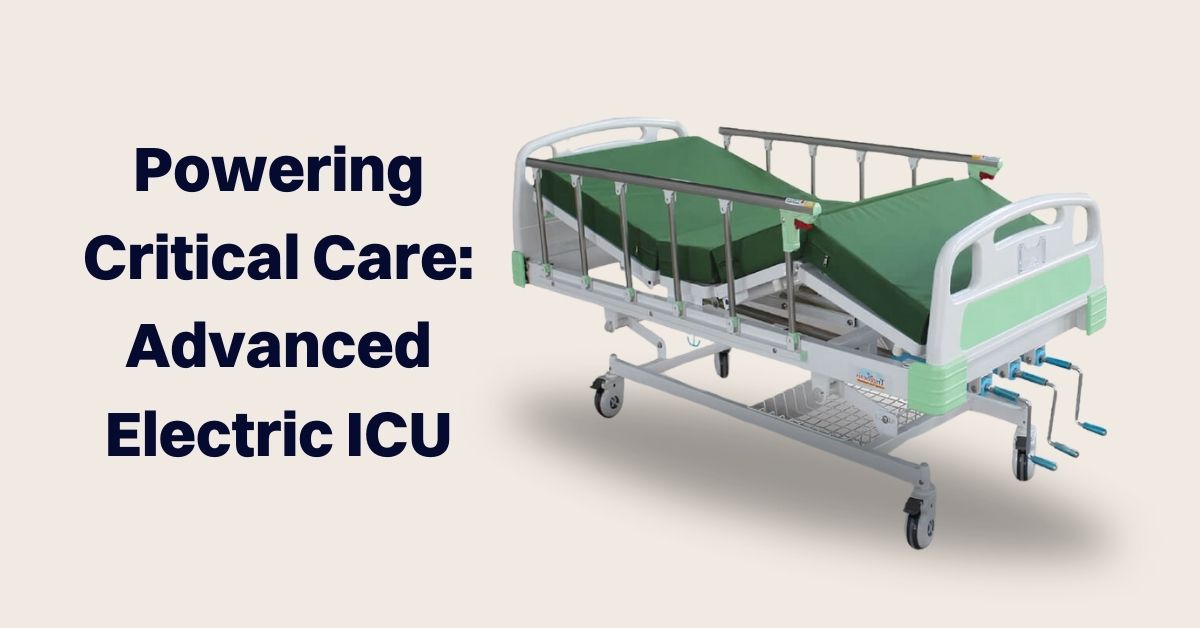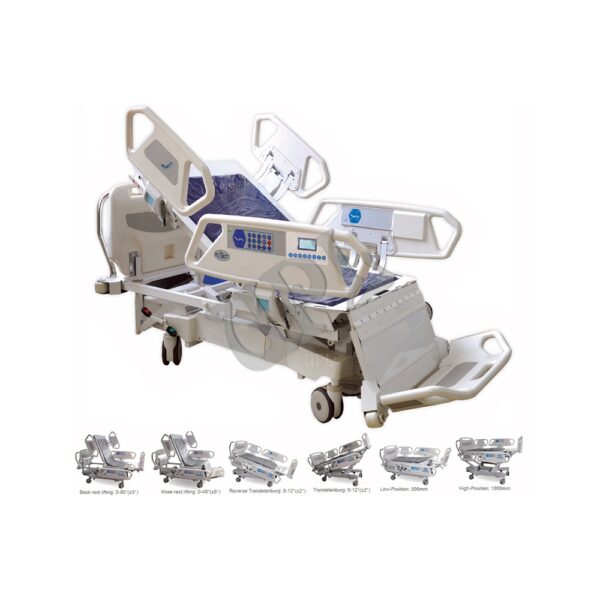The way we approach patient care is always changing due to the disruptive nature of technology in the healthcare industry. Electric ICU Beds are one of the ground-breaking inventions that have revolutionised critical care environments. These cutting-edge beds include a number of technologies that go above and beyond standard hospital beds in order to optimise posture, monitor patients more closely, and increase overall safety and care quality. We explore the crucial part that modern electric intensive care units (ICUs) play in enabling critical care in this blog.
Enhanced Patient Monitoring
Improved patient monitoring is one of the main benefits of modern electric intensive care unit beds. These beds include advanced monitoring systems that let medical staff keep a careful eye on vital signs and other important metrics in real time. Heart rate, blood pressure, and breathing rate are all continually monitored by integrated sensors, which give a complete picture of the patient’s health.
Healthcare practitioners are able to make well-informed decisions quickly thanks to this real-time data, which also helps in the early diagnosis of any problems. When monitoring equipment is seamlessly integrated into the bed, fewer extra devices are needed, which streamlines the monitoring procedure and improves overall efficiency in critical care units.
Improved Patient Positioning
A key component of critical care is patient placement, and modern electric ICU beds provide a degree of adaptability and personalisation that conventional beds can not. Because of the numerous movable parts of these beds, medical practitioners may best place patients for a range of tests, exams, and therapeutic interventions.
The adaptability of electric ICU beds improves the patient’s overall comfort and well-being, whether it’s raising the head for better breathing or changing the bed’s height to make it easier for carers to access the patient. In addition to improving patient outcomes, the flexibility to adjust postures reduces the possibility of problems brought on by extended immobility.
Enhanced Safety and Care
In critical care environments, patient safety is of the utmost importance. To meet the specific needs of intensive care, modern electric ICU beds are equipped with a variety of safety measures. These beds frequently include readily adjustable siderails to help avoid unintentional falls and offer extra support while transferring patients.
Additional Benefits
Beyond patient monitoring, improved positioning, and enhanced safety, advanced electric ICU beds offer several additional benefits that contribute to the overall efficiency and quality of care in critical care settings.
- Ease of Mobility: Electric ICU beds are equipped with wheels, making patient transportation within the hospital seamless. This is particularly valuable in emergency situations or when transferring patients between departments.
- Reduced Physical Strain: The electric adjustment mechanisms in these beds minimize the physical strain on healthcare professionals. This is especially beneficial in critical care units where rapid response and precise adjustments are often required.
- Integrated Connectivity: Many advanced electric ICU beds come with integrated connectivity options, allowing for seamless integration with hospital information systems. This connectivity streamlines the documentation process and ensures that patient data is readily accessible to the healthcare team.
Choosing the Right Advanced Electric ICU Bed
If healthcare providers want to improve their critical care skills, choosing the appropriate sophisticated electric ICU bed is essential. Features like robustness, usability, and the availability of support and training should all be carefully considered when weighing your alternatives. Furthermore, ensuring a smooth integration requires evaluating the bed’s compatibility with the hospital’s current infrastructure and electronic health record systems.
Modern electric intensive care unit beds are a paradigm change in critical care, utilising technology to raise patient safety and overall care by optimising placement, monitoring, and overall patient experience. These beds are essential parts of an advanced healthcare ecosystem that enable providers to provide the best treatment possible in life-threatening circumstances, not merely furniture. Electric ICU beds will surely play a more significant part in driving critical care as technology develops, establishing new benchmarks for patient outcomes in the dynamic field of healthcare.







